Tremiti Islands: What to See, How to Get There, and Activities to Do
Updated at: 17-09-2024
How this content can help you:
- You will learn where the Tremiti Islands are located and how to reach them by sea or by helicopter.
- You will get to know the five islands: San Domino, San Nicola, Capraia, Cretaccio, and Pianosa.
- You will discover what to see on San Nicola, such as the Abbey of Santa Maria a Mare and the Castle of Badiali.
- You will explore the attractions of San Domino, including the Grotta del Bue Marino and the Grotta delle Viole.
- You will learn about activities such as boat excursions, snorkeling, and diving among caves and spectacular seabeds.
- You will get to know the legends associated with the islands, such as the myth of Diomede.
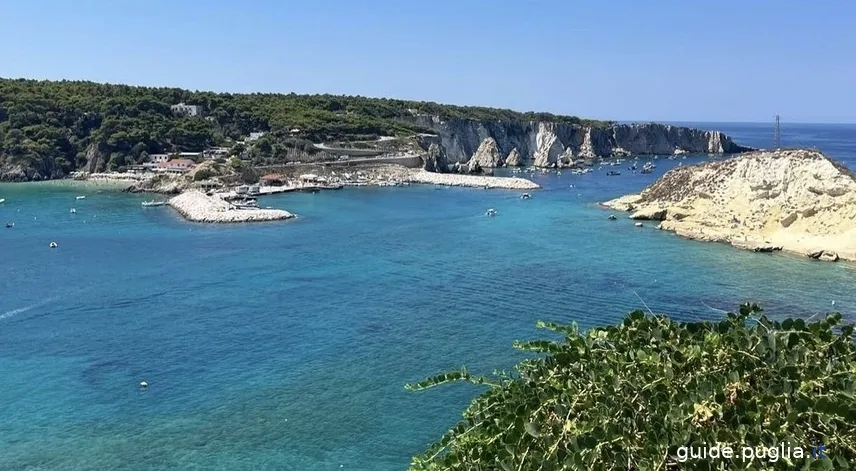
Why are the Tremiti Islands also called "The Pearls of the Adriatic"?
The nickname “The Pearls of the Adriatic” reflects their extraordinary natural beauty and unspoiled nature. Their exclusivity, rich biodiversity, and unique attractions, such as marine caves and breathtaking landscapes, contribute to their nickname of "pearls," highlighting their charm and exceptional value.
The archipelago of the Tremiti Islands is located in the Adriatic Sea, off the northern coast of Puglia. The islands are about 22 kilometers north of the Gargano coast, a promontory that extends into the sea.
The Tremiti belong to the province of Foggia and are part of the Gargano National Park, which includes both mainland and marine areas.
The archipelago is composed of five islands surrounded by crystal-clear waters, unspoiled nature, low and sandy coasts, and cliffs overlooking the sea:
- San Domino
- San Nicola
- Capraia
- Cretaccio
- Pianosa
Only San Domino and San Nicola are inhabited and offer a chance to experience life at a slower pace, letting yourself be fascinated by the rhythm of nature and the power of their unique and authentic landscapes. San Domino and San Nicola are close, just 450 meters apart, and are connected throughout the day by boat taxis.
The five islands are also known as the Diomedee because their origin is linked to the myth of the Greek hero Diomedes, who is said to have created them by throwing three large stones into the sea from Troy. Diomedes is said to have died on these islands.
The legacy of this myth includes the Diomedee seabirds, also known as albatrosses, with their distinctive song, which inhabit the cliffs of the archipelago.
How to Reach the Tremiti Islands
Do you want to spend your next vacation on the Tremiti Islands but don't know how to reach the "pearls of the Adriatic"?
The journey is very short, whether by sea or helicopter, and will take you to the wonderful islands of San Nicola, San Domino, Cretaccio, Capraia, and Pianosa.
Only San Nicola and San Domino are inhabited and host the main ports where all ferries arrive.
Ferries depart from the northern coast of peninsular Puglia, in the province of Foggia:
- From the port of Vieste on Lungomare Europa
- From the port of Peschici in Contrada Pozzillo
- From the port of Rodi Garganico on Via Scalo Marittimo
These ports are accessible by car via the A14 motorway (heading towards Bologna-Taranto if coming from the north, and towards Cerignola if coming from the south), exit at Poggio Imperiale, and then take the SS89 if coming from the north; if coming from the south, take the SS159.
By train, you can reach them by stopping at the San Severo or Foggia stations.
The Tremiti Islands can also be reached by sea from:
- Ports of Abruzzo (Pescara, Ortona, Vasto)
- Port of Molise (Termoli)
The port with the most daily connections and the greatest variety of means is Termoli. The crossing time varies from 50 minutes to two hours.
The Tremiti Islands can also be reached by helicopter with daily departures from the "Gino Lisa" civil airport in Foggia. The crossing time is 20 minutes.
Daily flights, during the summer season, not only connect Foggia directly with the Tremiti Islands but also with important Gargano locations such as San Giovanni Rotondo, Peschici, and Vieste.
It is necessary to book in advance.
Characteristics of the Tremiti Islands
The Island of San Nicola
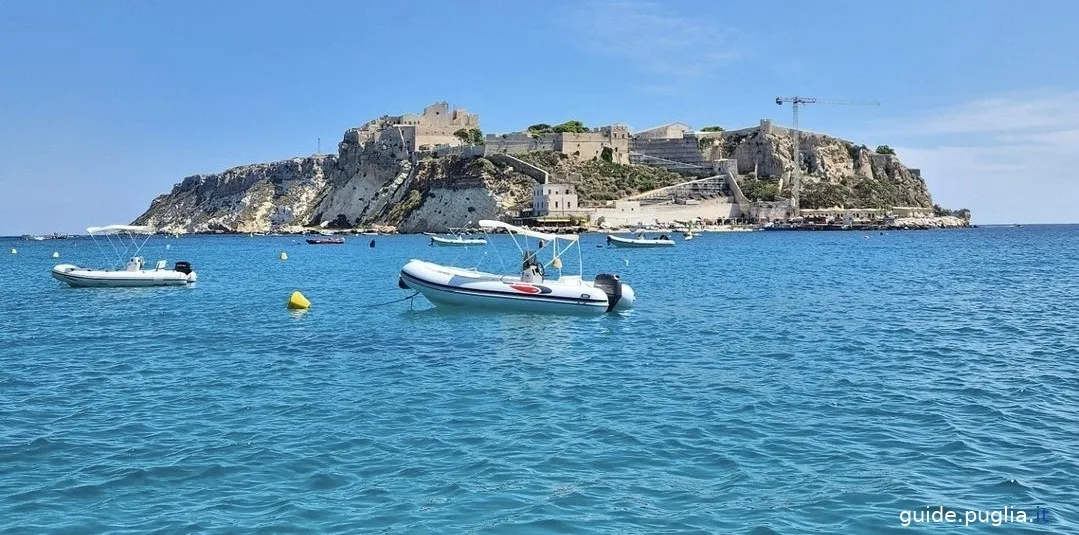
The Island of San Nicola, with its rocky coasts, is considered an open-air museum due to the Badiali Castle or Angioino Tower, built by Charles of Anjou as a defensive stronghold for the island, and the Sanctuary of Santa Maria a Mare, which has dominated the entire archipelago from the top of the island for 1,000 years.
The Island of San Domino
The Island of San Domino is the largest and most beautiful island in terms of landscape and nature. It is famous for its enchanting coves and caves, which can be visited on boat excursions.
Cala delle Arene is the only sandy beach on the Island of San Domino and all of the Tremiti Islands.
Among the caves of San Domino, the most magical are the Grotta dei Pagliai, which opens onto a crescent of golden sand creating an absolutely enchanting scene, and the Grotte del Bue Marino, named after its most famous inhabitant, the Monk Seal, which hides a small sandy beach inside and waters with an intense blue that reflects on the walls.
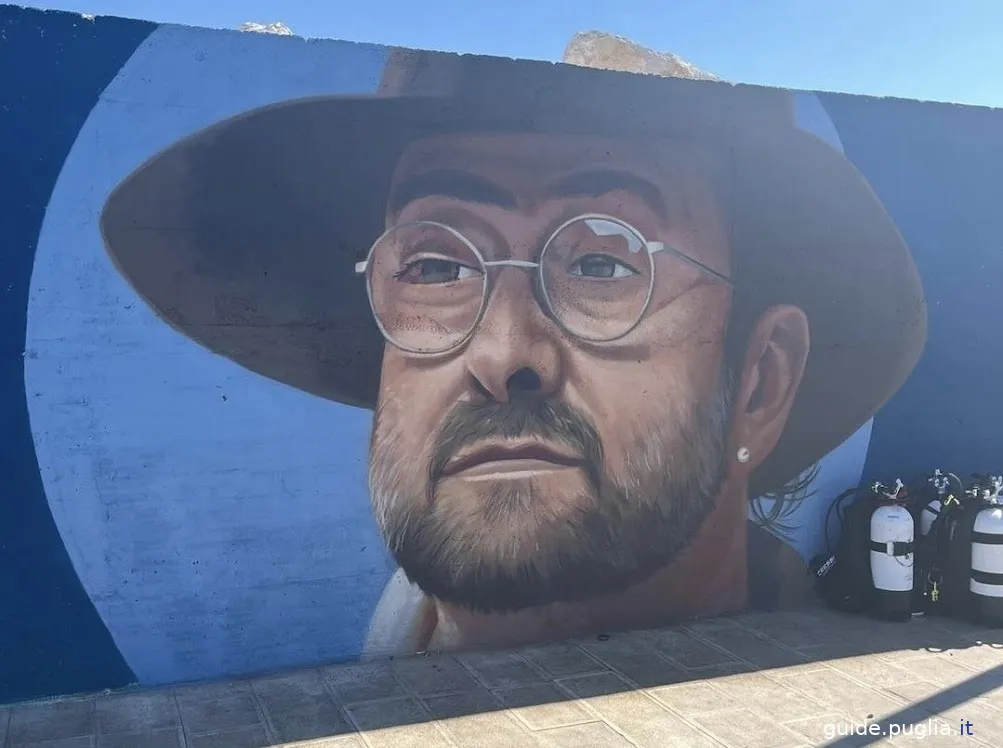
San Domino is also famous as the "Island of Lucio Dalla": the famous Italian singer-songwriter had a house here, and it was on this wonderful island that he composed some of his most beautiful songs, inspired by the colors and landscape. After his death, his ashes were scattered in the waters around the islands.
Capraia
Capraia (also known as Caprara) is one of the smaller islands of the Tremiti Archipelago, and the second-largest after San Domino. The name of the island comes from the presence of wild goats that once lived on the island.
Although there are no longer goats on the island today, the name has remained. It is a predominantly rocky island with a rugged coastline, with numerous cliffs and hidden coves. Caprara boasts unspoiled coves: Cala di Sorrentino, Cala dei Turchi, Cala Pietra del Fucile.
Cretaccio
Cretaccio is a very small island, located between the larger islands of San Domino and San Nicola. It is essentially a large limestone and clay rock, with a surface area of just a few hectares. It is uninhabited but visited for its tranquility and the beauty of its seabed.
The Island of Cretaccio is characterized by a predominantly clay composition, giving it a yellowish color. This fragility makes the island's territory subject to erosion, so much so that over time it has been progressively reduced by waves and winds.
According to some legends, Cretaccio is inhabited by a ghost, known as the "ghost of Cretaccio." It is said to be the spirit of a prisoner condemned to the island in ancient times. This legend adds a touch of mystery to the island.
Pianosa
Pianosa is the most remote and wild island of the archipelago, also uninhabited and located about 20 km from the other islands. Pianosa is a flat island, from which it takes its name, with a surface area of about 11 hectares. It is characterized by a predominantly rocky coast, with shallow waters surrounding it.
Its morphology makes it extremely exposed to winds and the sea, which has contributed to its depopulation.
It is a completely protected area. Access to the island is highly restricted to preserve its fragile ecosystem and marine biodiversity. This means that visits to the island are only possible with special permits and for scientific or conservation purposes.
The seabed around the Tremiti Islands is particularly beloved by divers as it offers spectacular scenes of caves, inlets, fish of all kinds and sizes, and wrecks of ancient and recent boats.
What to See and Do on the Tremiti Islands
The Tremiti Islands offer a wide range of natural, historical, and cultural attractions. Here's what you can see and do on each of the main islands of the archipelago:
San Domino
Cala delle Arene
The only sandy beach in the archipelago, perfect for relaxing and swimming in crystal-clear waters. It is particularly suitable for families with children. Cala delle Arene is easily accessible on foot from various parts of the island of San Domino.
The paths leading to the beach are well-marked and offer spectacular panoramic views along the way. It is also reachable by boat and is often visited by boat tours departing from other islands in the archipelago or from the Apulian mainland.
Grotta del Bue Marino
One of the island's most famous natural attractions is the Grotta del Bue Marino, a sea cave located along the coast of the island. The name of the cave refers to the monk seal (Monachus monachus), which once inhabited the coasts of the Tremiti.
The cave is accessible by boat and is famous for the beauty of its rock formations and the crystal-clear waters inside. A spectacular sea cave known for its light effects. It is reached by boat and is ideal for those who love exploring caves and snorkeling.
Grotta delle Viole
The cave is named after the violet reflections that can be seen inside.
These reflections are caused by sunlight penetrating through the water and hitting the rocky walls, creating shades of blue and violet that change depending on the time of day and weather conditions. It is accessible only by sea and is perfect for those seeking hidden spots to explore.
Scoglio dell'Elefante
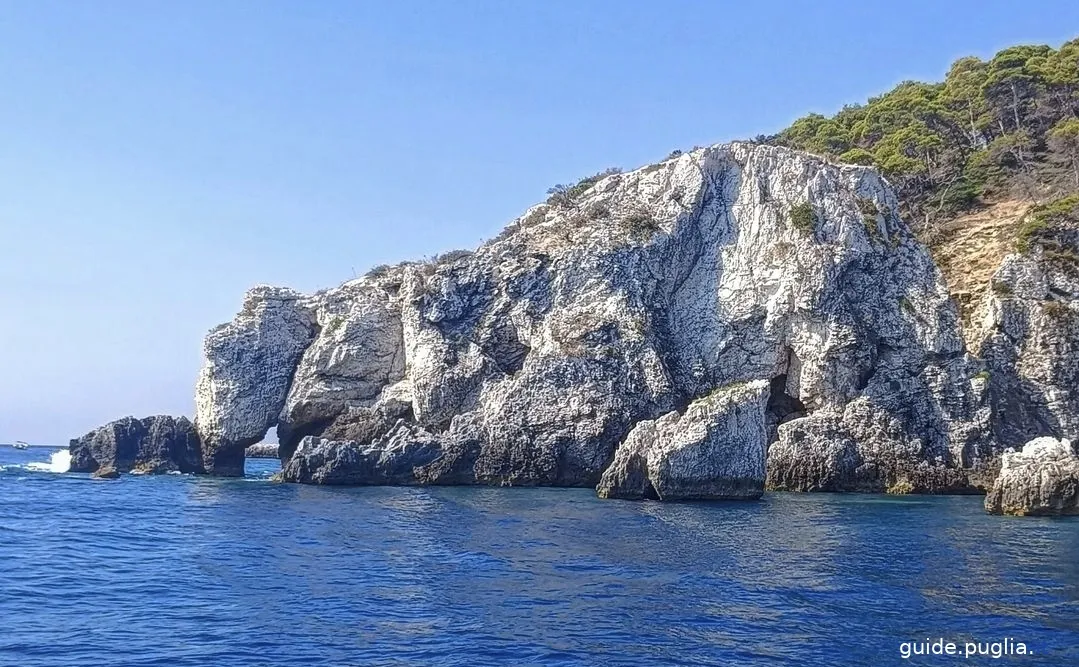
The Scoglio dell'Elefante is named for its shape resembling an elephant: a large rock jutting out from the sea, widening towards the base, creating a visual similarity to the head and trunk of an elephant.
This rock is distinguished by its imposing shape and dominant presence in the sea. The elephant shape is more recognizable from certain angles, especially during the best light hours.
Scoglio dell'Architiello
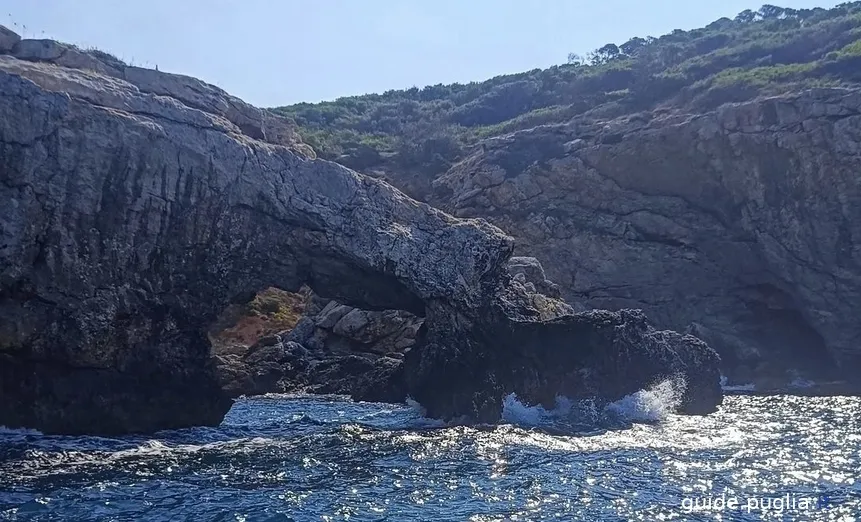
Is famous for its characteristic natural arch formation. This rock features a large arched opening reminiscent of a bridge or a door, hence the name "Architiello" (meaning "small arch").
These elephant-shaped and natural arch rock formations are among the most photographed in the archipelago. A boat tour allows you to see them up close.
Pineta di San Domino
A vast green area covering much of the island, ideal for peaceful walks in the shade of maritime pines, with trails leading to breathtaking viewpoints.
Punta del Diavolo
A promontory offering a breathtaking view of the sea and the other islands. The name "Punta del Diavolo" reflects the eerie and suggestive appearance of the place. The origin of the name is linked to local legends that attribute a mysterious and supernatural aura to this area.
A promontory offering a breathtaking view of the sea and the other islands.
San Nicola
Abbazia di Santa Maria a Mare
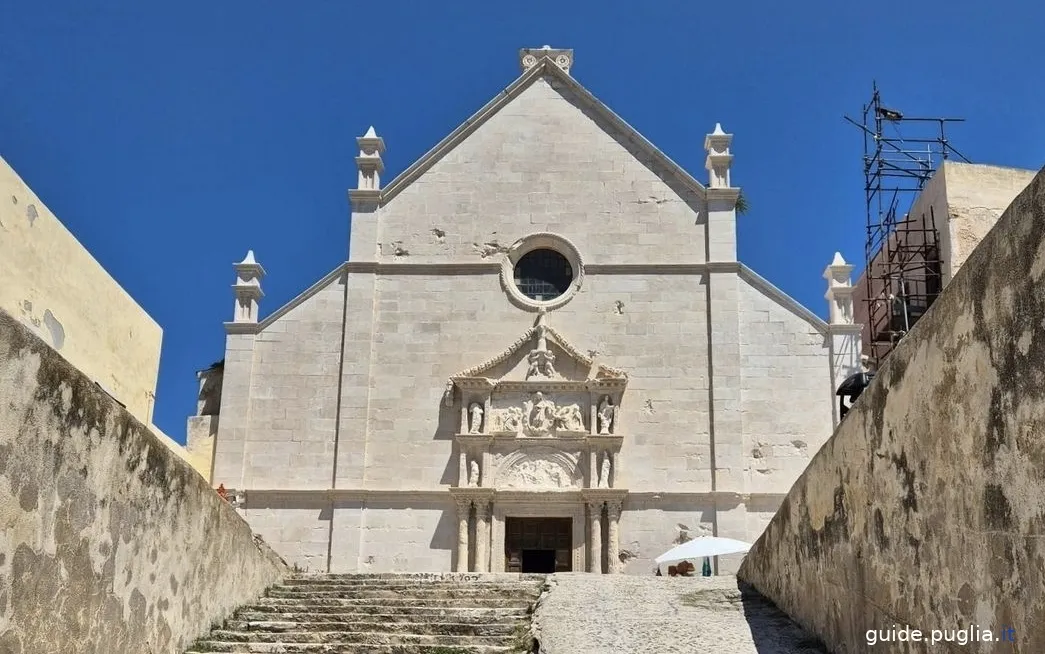
This 11th-century monastic complex is the historical heart of the Tremiti. It is a place rich in history, with a Romanesque church, a cloister, and defensive walls.
Inside, you can admire ancient frescoes and mosaic flooring.
Castello dei Badiali
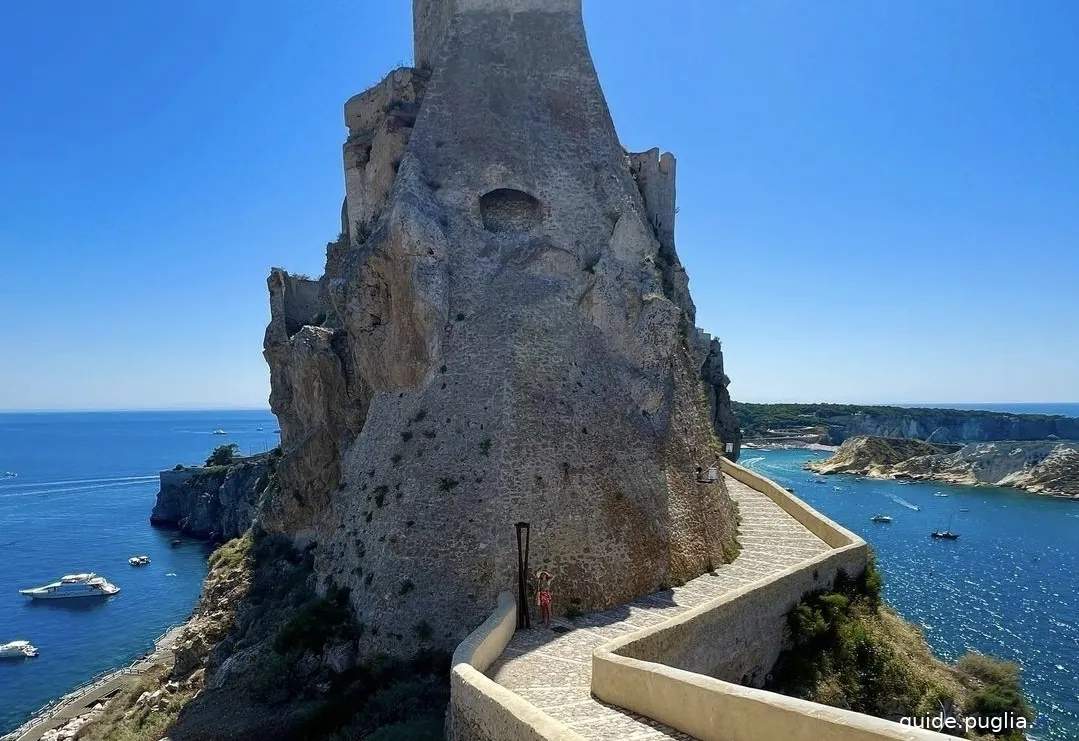
The construction of the castle dates back to the medieval period when the islands were an important strategic point in the Adriatic Sea.
Built to protect the island from pirate attacks, this castle offers a spectacular panoramic view of the sea and the other islands. The fortified walls and towers are a must for history lovers.
Mura di San Nicola
The imposing walls that surround the island are a testament to the island's strategic importance in the past. Walking along these walls offers an impressive view of the sea.
Cimitero degli Eroi
A suggestive and historically rich place where some of the heroes who defended the island over the centuries rest. The cemetery is located near the abbey and adds a touch of mystery to the visit.
Capraia (Caprara)
Cala dei Turchi
A hidden and tranquil bay, ideal for those looking for an isolated spot to swim and relax. The clear waters and rocky seabeds are perfect for snorkeling.
It is named after the Turkish Galea Wreck, a historic wreck lying nearby.
Cretaccio
Scoglio del Cretaccio
A large clay and limestone rock, a fascinating spot for short excursions and admiring the sea. It is an ideal point to enjoy a panoramic view of the archipelago.
Conclusion
The Tremiti Islands, with their unspoiled beauty and tranquil atmosphere, represent a unique and fascinating destination in the Adriatic Sea. This archipelago, known as the "Pearls of the Adriatic," offers visitors an unforgettable experience of breathtaking landscapes, ancient history, and rich biodiversity.
Whether exploring the sea caves of San Domino, admiring the views from the abbey on San Nicola, or diving into the crystal-clear waters around Capraia and Cretaccio, the Tremiti Islands promise unforgettable adventures and a deep connection with nature.
A place where time seems to slow down, perfect for those seeking relaxation, exploration, and an authentic bond with natural beauty.
